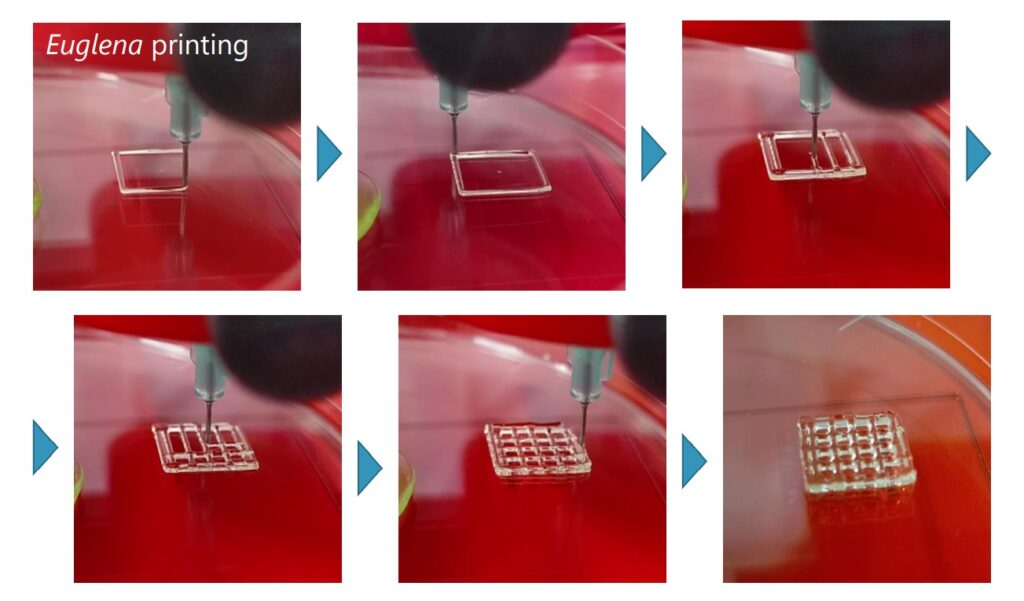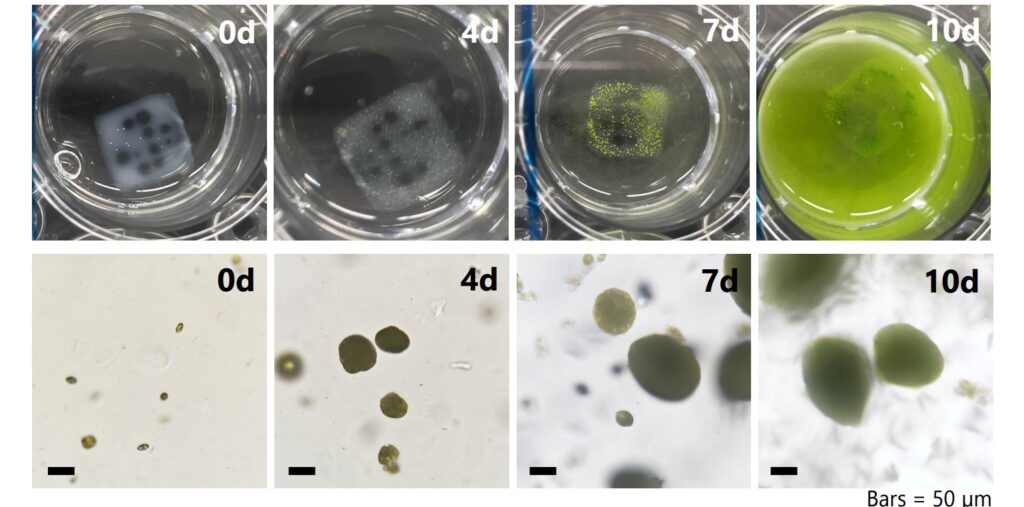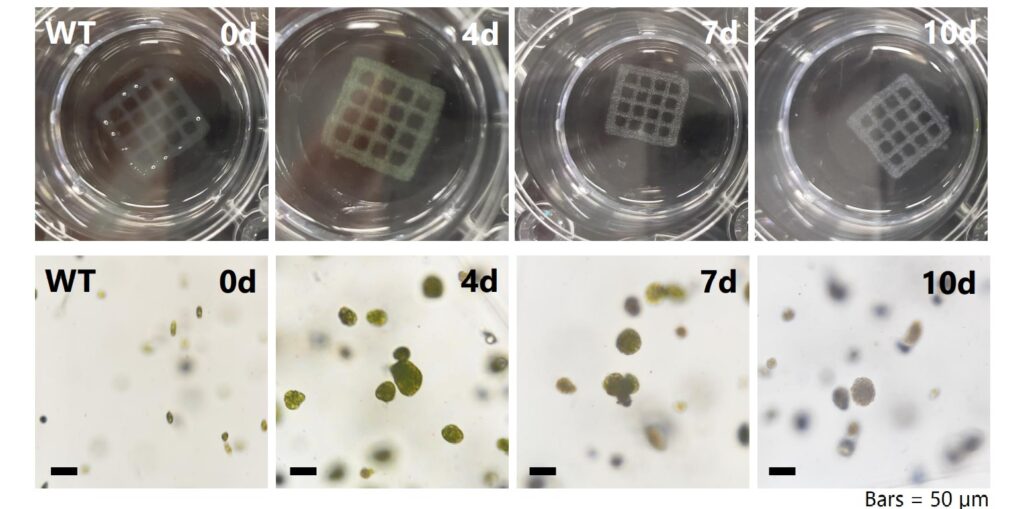
At the 3D Image Conference 2022, a research paper on 3D Bio-printing using Euglena received the “Outstanding Paper Award.”
The study was a collaborative effort between Euglena Co., Ltd., the National Institute of Advanced Industrial Science and Technology (AIST), the Faculty of Bioresource Sciences at Hiroshima Prefectural University, and the Faculty of Informatics at Nagasaki University.
The research confirmed that Euglena, a microalgae used as a bio-ink material in 3D Bio-printing, successfully proliferated within the structures printed by a 3D printer. The study was recognized with the Outstanding Paper Award at the 3D Image Conference 2022, held on July 13, 2023 (http://www.3d-conf.org/).
■Background and Objectives of the Research
The widely popular 3D printing technology in the industry allows the printing of living cells into desired structures, making it applicable in the field of bio-printing using biological materials. Recent advancements have mainly focused on animal cells for regenerative medicine applications.
On the other hand, 3D Bio-printing in the plant field, such as printing edible parts of grains or fruits to enhance plant growth efficiency, has lagged behind animal-related research.
The general steps involved in 3D Bio-printing include searching for suitable bio-ink materials (cells combined with gel suitable for the cells and printer conditions), 3D printing of the structure, and culturing (cell proliferation) of the printed structure.
Euglena, being a microalgae, fulfilled the necessary conditions for a suitable bio-ink in 3D Bio-printing. Unlike plant cells that require the isolation of cells from plant bodies, Euglena's lack of a cell wall made it an ideal candidate for this study.
■Methodology of the Research
■Methodology of the Research
1. Search for suitable 3D Bio-printing bio-ink materials
Two types of bio-inks were created based on sodium alginate.
A: A gel solution was prepared by dissolving 3% sodium alginate and 9% methylcellulose, and Euglena cells were mixed into the gel at a concentration of 2×105 cells/ml.
B: A gel solution was prepared by dissolving 2% sodium alginate and 25% non-ionic surfactant (Pluronic-F127), and Euglena cells were mixed into the gel at a concentration of 2×105 cells/ml.
2. 3D printing of the structure
Structures of grid patterns, measuring 10mm x 10mm, were printed using both types of bio-inks and then subjected to a gelation reaction in a 100mM calcium chloride solution for 10 minutes.

3. Culturing the cells within the 3D-printed structures
The survival of Euglena cells within the gelated structures was observed by placing them in a pH 3.5 medium during the culturing stage. The cell count was measured on the 4th, 7th, and 10th days after culturing.


4. Results
While the structures with bio-ink B did not show cell proliferation and experienced cell whitening on the 7th day of culturing, those with bio-ink A exhibited favorable cell growth. Moreover, the Euglena cells in the A bio-ink structures demonstrated a similar cell survival rate to cells cultured in liquid medium.

Furthermore, a grid structure with a height of 5mm was printed using bio-ink A and cultured for 7 days in pH 3.5 medium. Observations under an optical microscope confirmed the proliferation of Euglena cells, highlighting the feasibility of culturing Euglena cells within three-dimensional structures.
Significance and Future Prospects: The verification results suggest the potential applicability of Euglena and other microalgae in various plant cell-related fields of 3D Bio-printing. Additionally, Euglena has garnered attention in healthcare and energy industries for its potential to contribute to solving food and climate change issues. The development of new cultivation methods for Euglena and its utilization in different sectors hold promise.
Our company, committed to creating a sustainable society, actively employs microalgae such as Euglena in healthcare, biofuel, and social business initiatives. We aim to expand the utilization of microalgae and contribute to solving societal challenges through ongoing research on various cultivation methods and applications.
